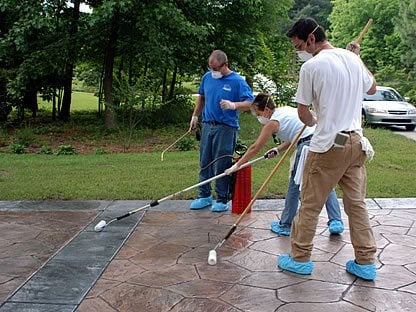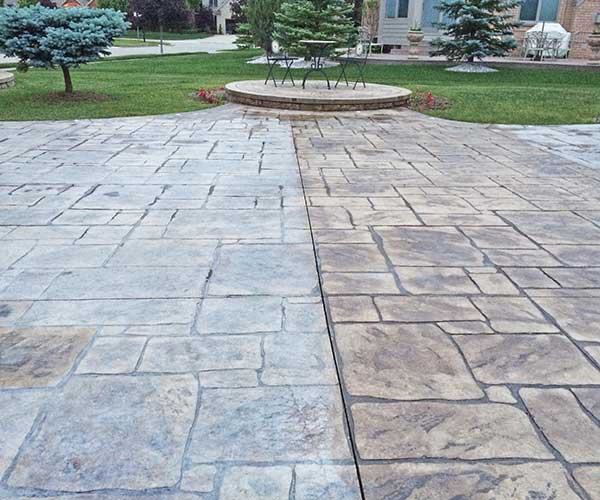Whether you’re a DIY enthusiast or a professional contractor, understanding sealers for decorative concrete can elevate your projects to new heights. In this comprehensive guide, we’ll delve into everything from types of sealers to application techniques, allowing you to make the best choices for your concrete surfaces.
What is Decorative Concrete?
Decorative concrete is a versatile material used in various settings, from patios and driveways to countertops and flooring. It can be stained, stamped, or textured to create stunning visual effects. However, to maintain its beauty and durability, applying a high-quality sealer is crucial.
Why Use a Sealer for Decorative Concrete?
Sealers play an essential role in preserving decorative concrete. Here are some key reasons why you should consider using a sealer:
- Protection against stains and spills
- Enhanced color vibrancy
- Increased durability and longevity
- Resistance to moisture and freeze-thaw cycles
- Ease of cleaning and maintenance
Types of Sealers for Decorative Concrete
When it comes to sealers, there are several options available. Understanding these will help you choose the right one for your project.
A. Acrylic Sealers
Acrylic sealers are popular due to their versatility and ease of application. They can provide a glossy finish, enhancing the color of your decorative concrete.
- Pros: Quick-drying, UV resistant, available in water and solvent-based formulas.
- Cons: May require reapplication every 1-3 years, can be slippery when wet.
B. Epoxy Sealers
Epoxy sealers offer superior durability and chemical resistance, making them ideal for high-traffic areas.
- Pros: Extremely durable, resistant to chemicals and stains.
- Cons: Longer curing time, requires more preparation and skill to apply.

C. Polyurethane Sealers
These sealers provide a tough protective layer and are suitable for both interior and exterior applications.
- Pros: Excellent abrasion resistance, long-lasting.
- Cons: More expensive than acrylics, can be challenging to apply.
D. Penetrating Sealers
These sealers penetrate the concrete to provide protection from within. They are often chosen for their natural look.
- Pros: Non-film forming, allows the concrete to breathe, minimizes efflorescence.
- Cons: Less effective against UV damage, may need reapplication every few years.

Choosing the Right Sealer for Your Project
Selecting the appropriate sealer depends on several factors, including:
- Type of decorative concrete
- Location (indoor vs. outdoor)
- Traffic conditions (heavy foot traffic vs. light use)
- Desired finish (glossy vs. matte)
Consider these factors to ensure long-lasting results.
Application Techniques for Sealers
Applying sealers properly is key to achieving the best results. Here’s a step-by-step guide:

A. Preparation
- Clean the surface: Remove all dirt, oil, and debris.
- Repair any cracks or damage before sealing.
- Allow the concrete to cure fully if it has been newly poured.
B. Application
Depending on the type of sealer, you may apply it using:
- A roller for larger surfaces.
- A sprayer for even coverage.
- A brush for detailed areas.

C. Drying and Curing
Allow the sealer to dry as per the manufacturer’s instructions. It’s vital to keep the area free from foot traffic during this time.
Comparison of Popular Decorative Concrete Sealers
| Type of Sealer | Durability | Finish | Application Ease | Cost |
|---|---|---|---|---|
| Acrylic | Moderate | Glossy | Easy | Low |
| Epoxy | High | Glossy | Moderate | Moderate |
| Polyurethane | Very High | Glossy | Hard | High |
| Penetrating | Moderate | Natural | Moderate | Moderate |

Maintenance Tips for Sealed Decorative Concrete
To ensure your decorative concrete remains beautiful and protected, follow these maintenance tips:
- Regularly clean the surface with a gentle detergent.
- Avoid abrasive cleaners that can damage the sealer.
- Reapply sealers as recommended based on their type and usage.
- Check for signs of wear, such as dullness or discoloration, and address them promptly.
FAQs About Sealers for Decorative Concrete
1. How often should I seal my decorative concrete?
The frequency of sealing depends on the type of sealer used and traffic levels. Generally, acrylic sealers need reapplication every 1-3 years, while penetrating sealers can last longer.

2. Can I apply a sealer over stained concrete?
Yes! Applying a sealer over stained concrete helps to protect the color and enhance its appearance.
3. What is the best weather for sealing concrete?
Ideal conditions are mild, dry weather with temperatures between 50°F and 90°F. Avoid sealing in direct sunlight or when rain is expected.
4. Is it necessary to use a concrete sealer?
While not mandatory, using a concrete sealer is highly recommended to protect your investment and maintain the aesthetic appeal of decorative concrete.